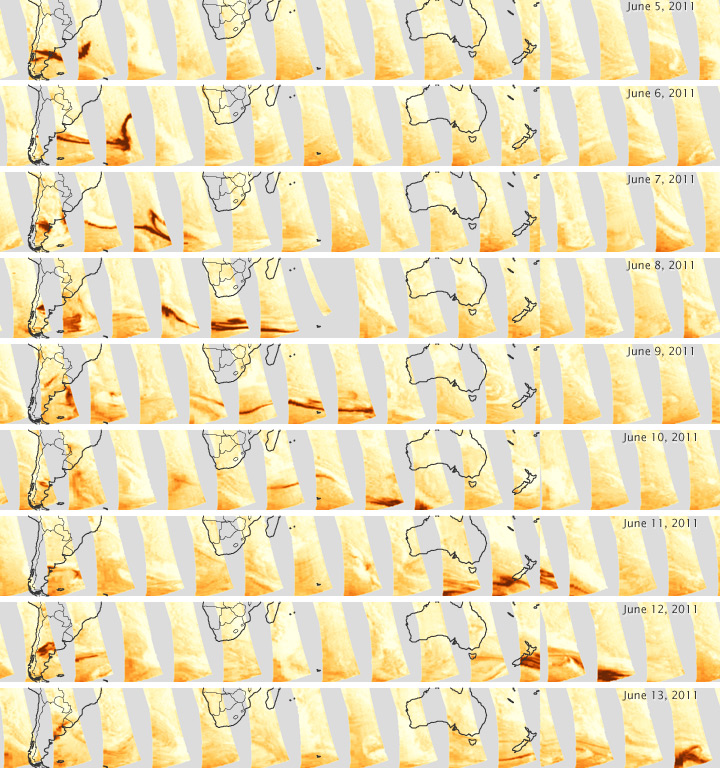


In its early, violent days, the eruption at the Puyehue-Cordón Caulle volcanic complex sent clouds of ash high into the atmosphere. Rising some 15 kilometers into the air, the ash settled into a jet of fast-moving wind on a trip around the world. This series of images tracks the ash from Chile to the eastern South Pacific Ocean, nearly completing a trip around the globe in eight days.
The images show the density of particles in the atmosphere (aerosols) as measured by the Ozone Monitoring Instrument (OMI) on the Aura satellite. The series starts on June 5, 2011, the day after the eruption began, and continues through June 13.
The volcanic ash is an area of concentrated particles represented in dark red. Shades of orange and yellow point to areas with lighter concentrations of particles, including ash, smoke from fires, and desert dust. The light gray regions are places where the OMI instrument did not collect useful data. Because the sensor requires light to measure particles in the atmosphere, it did not record the far south, which is submerged in the low light of late autumn. The ash was traveling around the globe in the far south near the edge of polar darkness.
The ash remained concentrated as it circled the globe in the stratosphere—enough so that it was visible in photo-like images over New Zealand and Australia. It was also concentrated enough to disrupt air travel in those countries. Harsh, abrasive volcanic ash can clog jet engines and cause serious damage to a plane in flight.
The eruption at the Puyehue-Cordón Caulle Volcanic Complex has since slowed, but the volcano continues to coat the surrounding region with prodigious amounts of ash. By June 15, the eruption plume reached between four and five kilometers (2-3 miles) in height.
NASA Earth Observatory image created by Jesse Allen, using data provided courtesy of Colin Seftor and the OMI Science Team. Caption by Holli Riebeek.